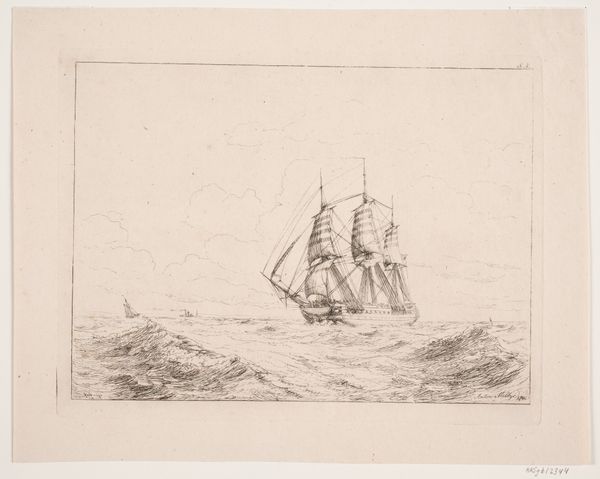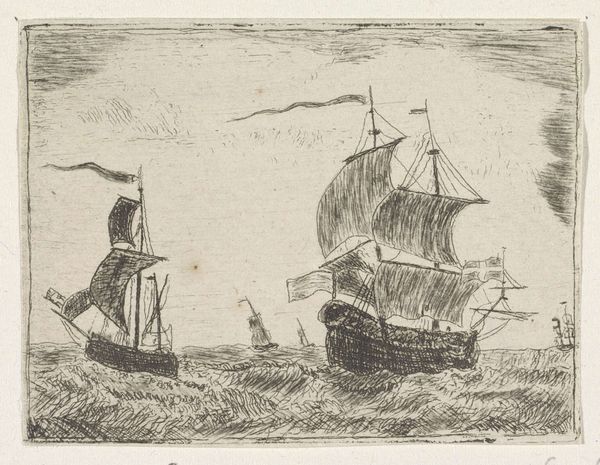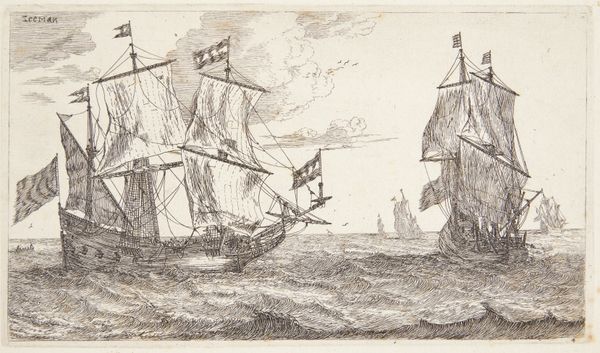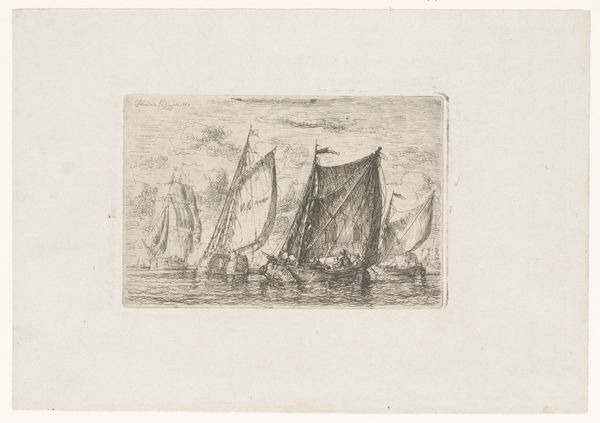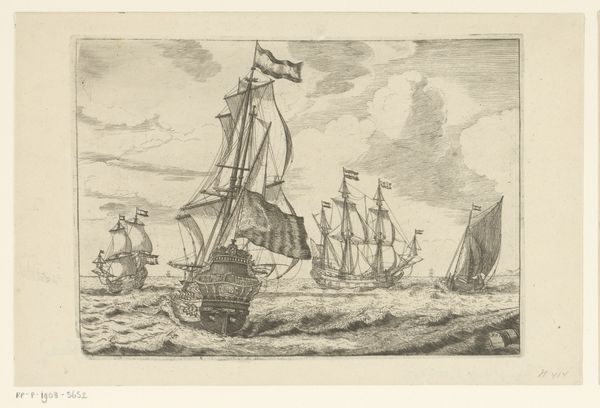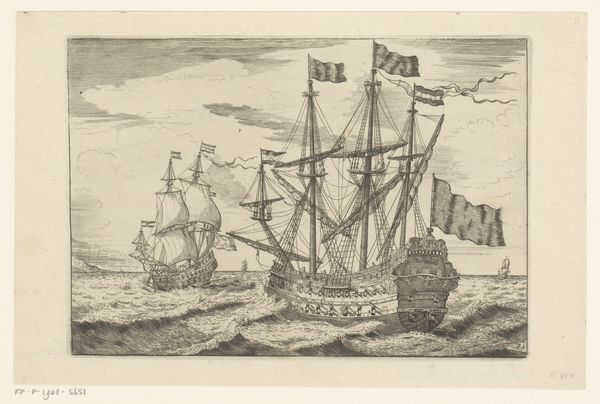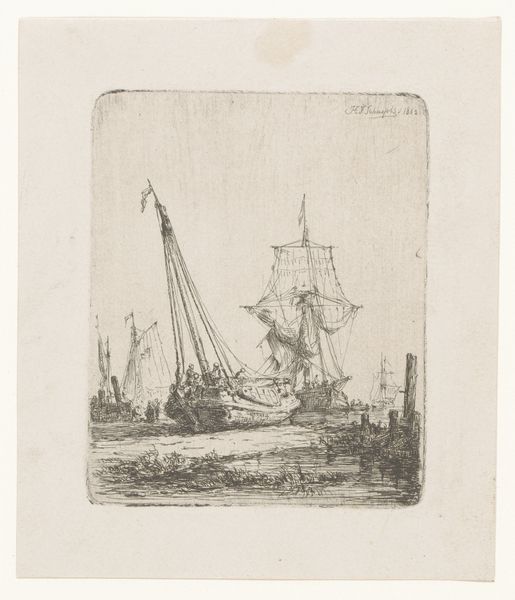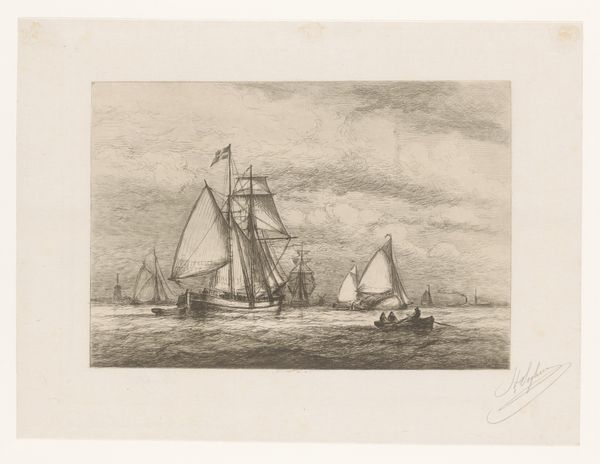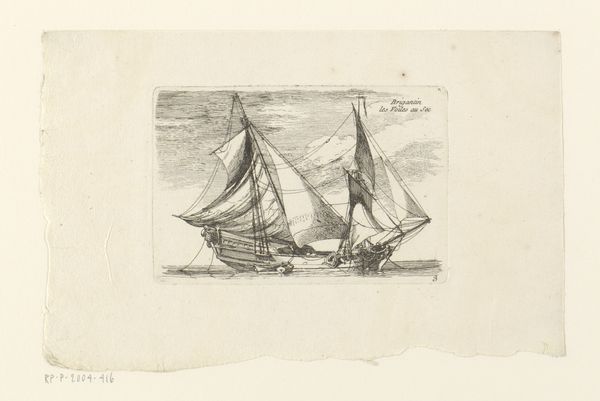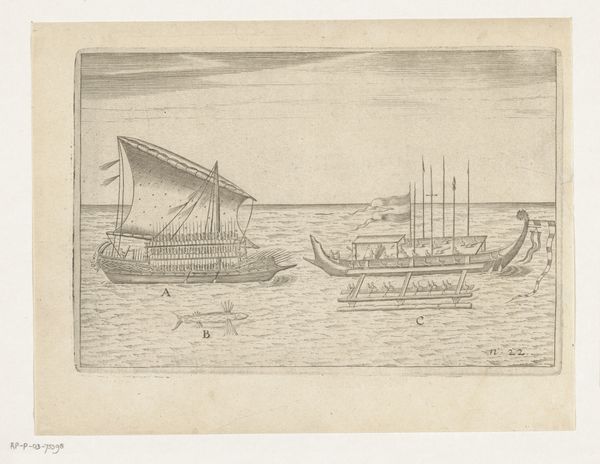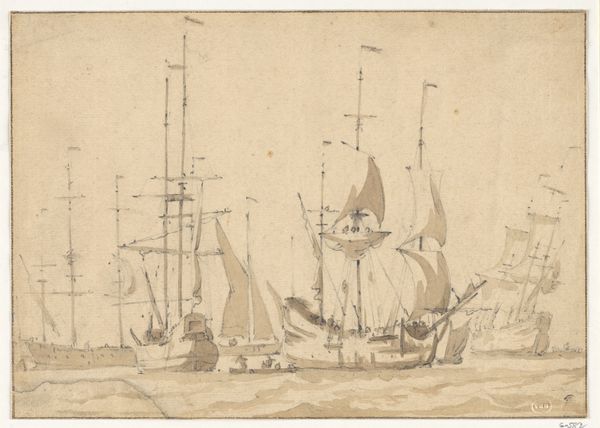
Dimensions: height 144 mm, width 200 mm
Copyright: Rijks Museum: Open Domain
Editor: Here we have Henri François Schaefels’ 1863 etching, “Ship on the Water Firing a Cannon.” It's amazing how much detail he got with just etching! I’m struck by the number of vessels crammed into this scene; it almost feels like a chaotic industrial landscape at sea. What jumps out at you? Curator: Immediately, I see a work deeply rooted in its material context. Think about the production of prints in 19th-century Europe. Etchings like this weren’t merely artistic expressions, they were commodities. How were they distributed? To whom? Was this artist creating 'high art', or something more akin to mass media of its time, churning out images to fuel public imagination about naval power and global trade? Consider also the material itself: the metal plate, the acid, the ink, the paper. Editor: So, you’re saying that we can't separate this beautiful scene from the realities of printmaking's economics and the labor involved? Curator: Precisely! The ships depicted aren't just romantic images; they represent global networks of trade, the physical labor of sailors, and the industrial might needed to build and maintain these vessels. What statement is being made by rendering such subject matter in the reproducible and relatively affordable medium of the print? Editor: I see, the etching itself mirrors the means of production represented within the scene. The detail suggests precision, labor and industrious effort! Curator: Exactly! Editor: This has given me a fresh perspective. Thank you! Curator: Likewise, thinking about this work as a form of material production is a worthwhile perspective.
Comments
No comments
Be the first to comment and join the conversation on the ultimate creative platform.
